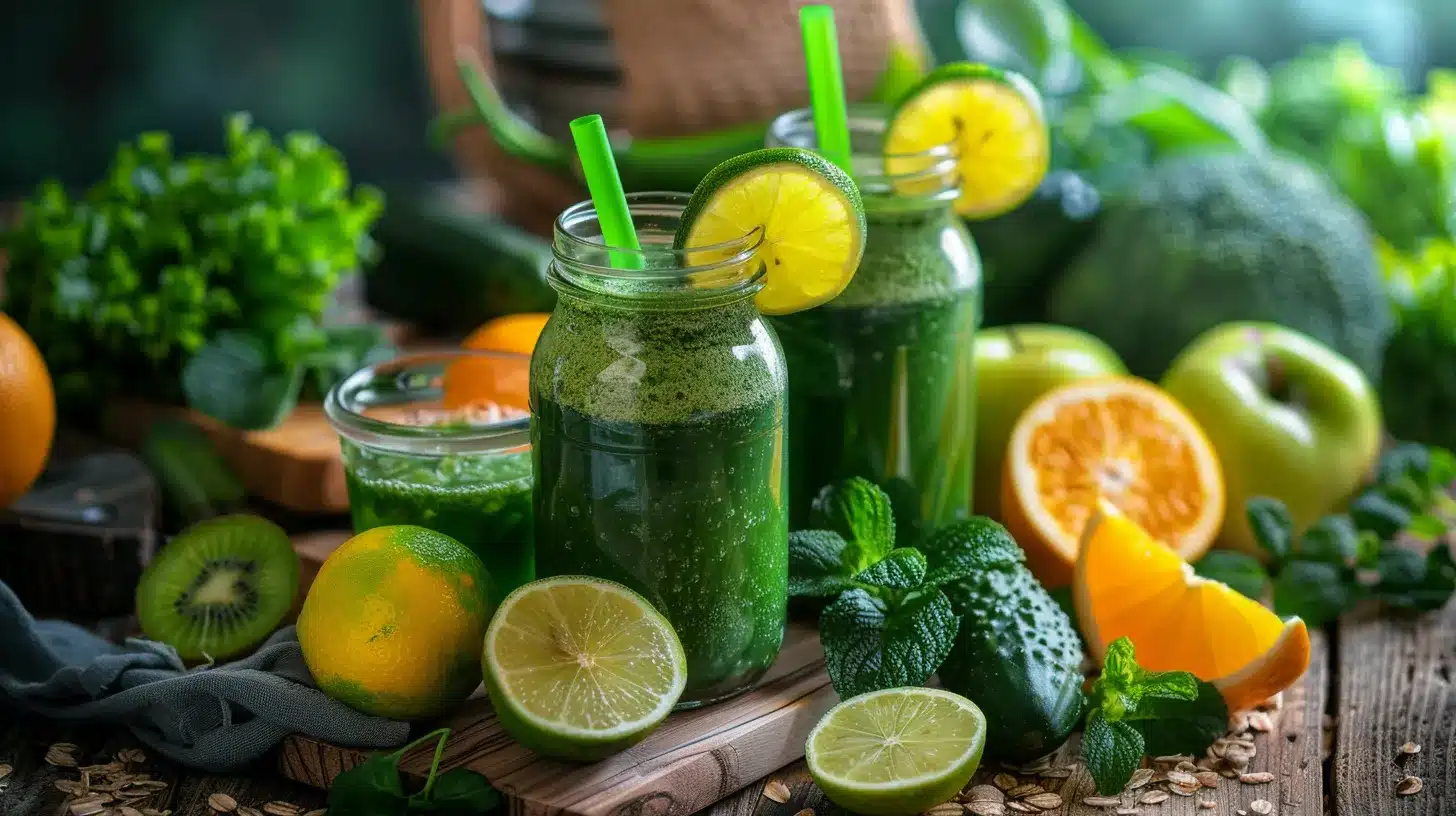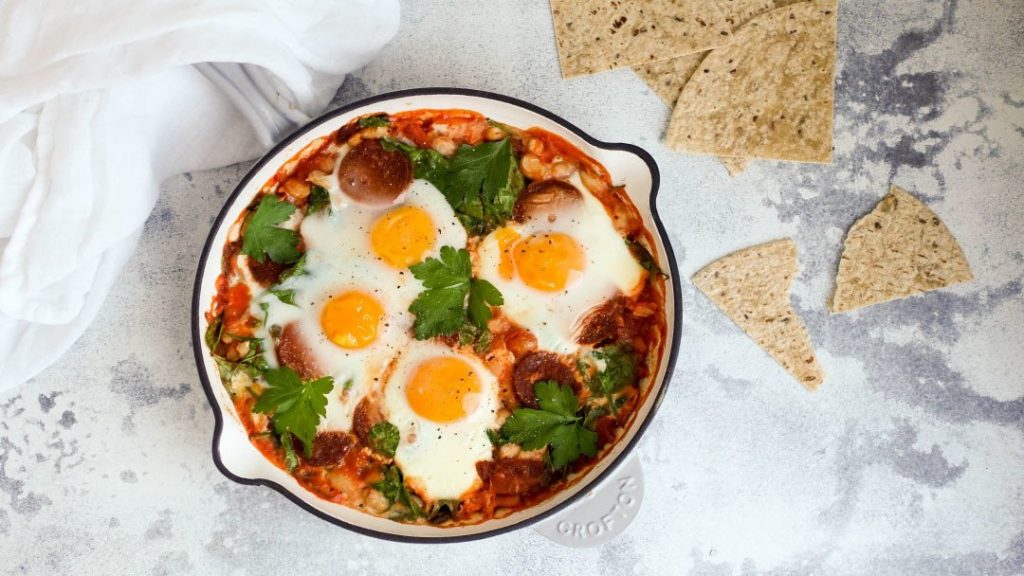
Are you struggling to balance your meals for optimal health and fitness? Mastering macronutrients is key to achieving your weight and muscle goals. This guide will teach you how to understand macronutrients, set personal goals, and plan balanced meals. You’ll learn effective meal prep strategies and how to overcome common challenges. By the end, you’ll have the knowledge to create nutritious, balanced meals with Jet Fuel Meals that support your fitness journey, whether you’re aiming for weight loss or muscle gain.
Key Takeaways
- Understanding macronutrients is essential for creating balanced meals that support health and fitness goals
- Effective meal prep strategies help maintain a nutritious diet while overcoming challenges like budget constraints
- Regular monitoring and adjusting of macronutrient intake ensures continued progress towards personal health objectives
- Seeking professional guidance can provide valuable insights for optimizing individual nutrition plans
- Balancing carbs, proteins, and fats supports energy levels, muscle health, and overall well-being
Understanding Macronutrients for Balanced Meals

Macronutrients are the building blocks of a balanced diet. Understanding carbs, proteins, and fats is key to creating nutritious Jet Fuel Meals. Carbs fuel energy, proteins support muscle health, and fats aid essential body functions. A nutritionist can help tailor macronutrient intake for optimal health, endurance, and calorie management in your food choices.
Defining Macronutrients and Their Importance
Macronutrients are the three main types of nutrients that provide energy in a diet: carbohydrates, proteins, and fats. These nutrients play crucial roles in fueling the body, supporting muscle growth, and maintaining overall health. A balanced intake of macronutrients is essential for optimal exercise performance and recovery. A dietitian can help individuals tailor their macronutrient intake to meet specific health and fitness goals:
The Role of Carbohydrates in Energy Production
Carbs are the body’s primary energy source, crucial for a healthy diet and weight loss. They fuel the brain and muscles, giving the attention needed for daily tasks. Complex carbs from whole grains and nuts provide sustained energy, while simple carbs offer quick bursts. Balancing carb intake helps maintain stable blood sugar levels and supports fat metabolism:
Proteins and Muscle Maintenance
Proteins are essential for muscle maintenance and growth. Eating adequate protein helps repair and build muscle tissue, especially after workouts. A balanced diet should include protein sources like lean meats, fish, eggs, and plant-based options such as legumes and whole grains. For optimal muscle health, experts recommend consuming about 1 gram of protein per pound of body weight daily, spread across meals that also include vegetables and healthy fats like avocado.
Healthy Fats for Essential Body Functions
Healthy fats play a vital role in nutrition and body composition. They help absorb fat-soluble vitamins, support hormone production, and provide energy. Fruits like avocados offer healthy fats, while nuts and seeds provide essential fatty acids. Including these fats in meals can help balance blood sugar levels and reduce cravings for starchy foods.
Setting Personal Macronutrient Goals

Setting personal macronutrient goals involves identifying individual caloric needs, adjusting ratios for specific objectives, and considering activity levels. This process helps create balanced meals with the right mix of pasta, meat, and oil to meet energy expenditure needs. Understanding these factors allows for tailored nutrition plans that support various health and fitness goals.
Identifying Individual Caloric Needs
Identifying individual caloric needs is crucial for setting effective macronutrient goals. The basal metabolic rate, which varies based on factors like age, gender, and weight, forms the foundation for calculating daily energy requirements. To determine precise caloric needs, individuals can use nutrition facts labels on foods like tofu to track their intake. By considering both macronutrients and micronutrients, people can create balanced meal plans that support their health goals while managing sugar consumption.
Adjusting Macronutrient Ratios for Specific Objectives
Adjusting macronutrient ratios helps achieve specific health and fitness goals. For weight management, reducing saturated fat and increasing protein can boost metabolism. A balanced recipe might include lean protein, whole grain cereal, and healthy fats. This approach supports muscle growth and aids in managing blood sugar levels:
Considering Activity Levels in Macronutrient Planning
Activity levels play a crucial role in macronutrient planning. For those engaged in strength training, higher protein intake supports muscle growth and repair. People with active lifestyles may need more carbohydrates to fuel their workouts, while those with sedentary jobs might benefit from a diet lower in carbs. Balanced meals should include a mix of nutrients, such as lean beef for protein, potato for complex carbs, and vegetables to support blood health and digestion. Adjusting macronutrient ratios based on activity levels helps optimize energy levels and overall health:
- High activity: Increase carbohydrate intake for energy
- Strength training: Boost protein consumption for muscle repair
- Sedentary lifestyle: Focus on balanced meals with moderate carb intake
- Endurance activities: Incorporate complex carbs and lean proteins
Planning Balanced Meals With Macronutrients

Planning balanced meals with macronutrients involves selecting nutrient-dense ingredients like fish and olive oil. It requires creating meal plans that incorporate all macros, controlling portions for optimal intake, and timing meals around daily schedules. Using a calculator helps determine the right balance of nutrients for hormone health and muscle mass. This approach ensures a well-rounded diet tailored to individual needs.
Selecting Nutrient-Dense Ingredients
Selecting nutrient-dense ingredients is key to creating balanced meals with optimal macronutrients. MyFitnessPal can help track the nutritional value of foods like brown rice, which provides complex carbs and minerals. When cooking, using small amounts of butter can add flavor and healthy fats. Focusing on ingredients rich in vitamins and minerals ensures that meals not only meet macronutrient goals but also provide essential micronutrients for overall health.
Creating Meal Plans That Incorporate All Macronutrients
Creating meal plans that incorporate all macronutrients involves balancing the percentage of carbs, proteins, and fats to support bodily functions and maintain healthy tissue. A well-designed plan considers an individual’s lifestyle and taste preferences while aiming to manage cholesterol levels. By including a variety of nutrient-dense foods, meal plans can provide the right balance of macronutrients to support overall health and fitness goals.
Portion Control for Optimal Nutrient Intake
Portion control plays a crucial role in achieving optimal nutrient intake for balanced meals. By measuring servings of olive oil, cheese, and whole grain bread, individuals can manage their glucose levels and reduce the risk of disease. Proper portioning ensures a balanced intake of macronutrients, helping maintain energy levels throughout the day. Here’s a guide to portion sizes for common foods:
- Proteins: Palm-sized portion (3-4 oz)
- Carbohydrates: Fist-sized portion (1/2 to 1 cup)
- Fats: Thumb-sized portion (1-2 tablespoons)
- Vegetables: Two handfuls (1-2 cups)
Timing Meals Around Daily Schedules
Timing meals around daily schedules helps optimize macronutrient intake and supports overall health. The Dietary Guidelines for Americans suggest spreading meals throughout the day, with attention to ingredient quality and portion sizes based on height and activity level. This approach can help manage energy levels, prevent overeating, and reduce the risk of eating disorders. For example, a balanced lunch might include grilled chicken, a complex carbohydrate, and vegetables, providing sustained energy for afternoon activities.
Meal Prep Strategies for Success

Successful meal prep hinges on smart strategies. Organizing grocery shopping ensures all ingredients are on hand. Efficient cooking techniques save time, while proper storage keeps meals fresh. Rotating recipes prevents boredom. These methods help create balanced meals with macronutrients like those found in sweet potatoes and yogurt, supporting health goals and managing conditions like diabetes.
Organizing Grocery Shopping for Meal Prep
Organizing grocery shopping for meal prep is key to maintaining a balanced diet, even for those following a ketogenic diet or monitoring body fat percentage. By planning meals in advance, shoppers can ensure they stock up on foods rich in polyunsaturated fats and essential amino acids. This approach helps create nutritious breakfasts and other meals that support overall health goals while managing acid reflux or other dietary concerns.
Efficient Cooking Techniques to Save Time
Efficient cooking techniques can save time and streamline meal planning for lunch and dinner. Batch cooking links multiple meals together, reducing prep time and ensuring balanced meals throughout the week. Utilizing methods like sheet pan dinners or one-pot meals not only simplifies cooking but also minimizes cleanup. These strategies help individuals maintain a healthy diet, which may contribute to cancer prevention and overall wellness.
Storing Meals Safely for Freshness
Storing meals safely ensures freshness and preserves the nutritional value of ingredients like cottage cheese and monounsaturated fats. Proper storage techniques help maintain the quality of snacks and meals, making it easier to stick to a balanced diet. When storing prepped meals, it’s crucial to use airtight containers and label them with dates to track freshness. Here are some tips for safe meal storage:
- Refrigerate perishable items within two hours of cooking
- Use glass containers for foods high in unsaturated fats
- Freeze meals in portion-sized containers for easy thawing
- Store dry snacks from the grocery store in cool, dark places
- Separate raw and cooked foods to prevent cross-contamination
Rotating Recipes to Prevent Monotony
Rotating recipes prevents monotony in meal prep and ensures a balanced intake of macronutrients. By incorporating a variety of ingredients like quinoa, salmon, and different grains, individuals can maintain interest in their meals while meeting nutritional needs. Using a tablespoon for precise measurements helps control portions and achieve the right balance of nutrients. A diverse recipe rotation not only keeps meals exciting but also provides a wide range of vitamins and minerals essential for overall health:
- Alternate protein sources (e.g., salmon, chicken, tofu)
- Vary grains (e.g., quinoa, brown rice, whole wheat pasta)
- Experiment with different vegetables and fruits
- Try new herbs and spices for flavor variety
- Include a mix of cooking methods (grilling, baking, stir-frying)
Overcoming Common Meal Prep Challenges

Meal prep challenges can hinder balanced nutrition. This section explores adapting for dietary needs, managing budgets while maintaining nutrition, and staying motivated. Tips include using coconut oil for healthy fats, controlling serving sizes for salads, and organizing the refrigerator for easy access. Smart choices, like incorporating liver for nutrient density, help overcome common obstacles in meal preparation.
Adapting Meal Prep for Dietary Restrictions
Adapting meal prep for dietary restrictions requires creativity and planning. Those with specific needs, such as plant-based diets or coconut allergies, can work with a personal trainer to create a menu that meets their nutritional requirements. By focusing on versatile ingredients and substitutions, individuals can prepare balanced meals that align with their dietary goals while still enjoying treats like a healthy cookie now and then.
Managing Budget While Eating Balanced Meals
Managing a budget while maintaining balanced meals is achievable with smart planning. Shoppers can focus on cost-effective protein sources like lean chicken or beans, which provide essential nutrients without breaking the bank. By practicing portion control, individuals can stretch their food budget further while supporting lean body mass. Incorporating affordable, nutrient-dense foods such as sweet potatoes and eggs helps meet calorie goals without resorting to strict calorie restriction. Adding a small amount of honey to meals can provide natural sweetness and energy, making budget-friendly dishes more appealing.
Staying Motivated and Consistent With Meal Prep
Staying motivated and consistent with meal prep requires creating a kitchen environment that supports healthy habits. Organizing the pantry with visible, nutritious options like nut butter and maple syrup can help curb hunger and maintain satiety. By preparing meals in advance, individuals can avoid last-minute unhealthy choices and ensure a balanced intake of macronutrients throughout the week. Setting small, achievable goals and tracking progress can boost motivation, making meal prep a rewarding part of a healthy lifestyle.
Monitoring Progress and Adjusting Plans

Monitoring progress and adjusting meal plans is key to mastering macronutrients. This section covers tracking intake, recognizing signs for ratio modifications, and seeking professional guidance. By using equations to calculate needs and including oily fish like tuna, individuals can tailor their plans to meet goals, even during pregnancy. Effective monitoring ensures balanced nutrition for optimal health.
Tracking Macronutrient Intake Effectively
Tracking macronutrient intake effectively involves monitoring daily consumption of carbs, proteins, and fats. This process helps individuals adjust their diet to support physical activity and manage health conditions like type 2 diabetes. By logging meals, including staples like oatmeal, people can ensure they’re getting the right balance to maintain glycogen stores for energy. It’s important to account for all food sources, even occasional treats like candy, to get an accurate picture of overall intake and make informed dietary choices.
Recognizing Signs to Modify Macronutrient Ratios
Athletes and bodybuilders often need to modify their macronutrient ratios based on their performance and physique goals. Signs that indicate a need for adjustment include changes in energy levels, muscle recovery, and body composition. For example, an athlete might increase their carbohydrate intake, including fiber-rich foods like broccoli, if they feel fatigued during workouts. Similarly, a bodybuilder might boost their protein intake while reducing simple sugars from sources like syrup to support muscle growth and definition.
Seeking Professional Guidance When Necessary
Seeking professional guidance can be a valuable tool when adjusting macronutrient plans. A nutritionist’s knowledge can help individuals fine-tune their intake of foods like brown rice and wheat to support better sleep and overall health. They can provide personalized advice on balancing meals, considering factors such as activity level and health goals. Professional guidance ensures that meal prep strategies align with the latest nutritional science, helping individuals make informed choices for their well-being:
- Assess current diet and lifestyle habits
- Identify areas for improvement in macronutrient balance
- Develop personalized meal plans with appropriate portions
- Recommend specific foods to support individual health goals
- Provide education on reading nutrition labels and meal prep techniques
Conclusion

Mastering macronutrients is key to creating balanced meals that support health and fitness goals. By understanding the roles of carbs, proteins, and fats, individuals can tailor their diets to meet specific needs and preferences.
Effective meal prep strategies, including smart grocery shopping and efficient cooking techniques, make it easier to maintain a balanced diet. These approaches help overcome common challenges like budget constraints and dietary restrictions.
Regular monitoring and adjustments ensure continued progress towards nutritional goals. Seeking professional guidance when needed can provide valuable insights and personalized recommendations for optimal health:
- Understand macronutrient basics
- Set personal goals
- Plan balanced meals
- Implement effective meal prep strategies
- Overcome challenges
- Monitor progress and adjust as needed
Frequently Asked Questions
How do I calculate the right macronutrient balance for my meals?
Calculating the right macronutrient balance depends on your goals, body composition, and activity level. Generally, aim for 45-65% carbohydrates, 10-35% protein, and 20-35% fat of your total daily calories. Adjust these ratios based on personal needs and consult a nutritionist for personalized guidance.
What are some easy meal prep strategies for balanced macronutrients?
Jet Fuel Meals offers a convenient solution for balanced macronutrients. Their meal prep service delivers portion-controlled, chef-prepared meals with customizable plans like Keto and Weight Loss. This eliminates the need for planning and cooking, ensuring you get the right balance of proteins, carbs, and fats without effort.
How can I overcome common challenges when meal prepping?
Overcome meal prep challenges by planning ahead, batch cooking, and using versatile ingredients. Invest in quality containers, prep ingredients in advance, and create a varied menu to avoid boredom. Utilize time-saving tools and recipes that align with your dietary goals and schedule.
What’s the best way to track progress with macronutrient-based meal plans?
Tracking macronutrient progress is most effective using a combination of food logging apps and regular body composition measurements. Apps like MyFitnessPal allow easy tracking of daily macro intake, while periodic weigh-ins and body fat percentage checks help assess the plan’s effectiveness over time.
How often should I adjust my macronutrient goals for optimal results?
Adjusting macronutrient goals should typically occur every 4-6 weeks, depending on progress and goals. Jet Fuel Meals offers customizable meal plans that can help maintain optimal macronutrient ratios, making it easier to stay on track with fitness goals while enjoying convenient, chef-prepared meals.
Conclusion
Mastering macronutrients is essential for creating balanced meals that support health and fitness goals. By understanding the roles of carbs, proteins, and fats, individuals can tailor their diets to meet specific needs, whether aiming for weight loss, muscle gain, or improved overall wellness. Effective meal prep strategies, including smart grocery shopping and efficient cooking techniques, make it easier to maintain a balanced diet and overcome common challenges like budget constraints and dietary restrictions. Regular monitoring and adjustments, coupled with professional guidance when needed, ensure continued progress towards optimal nutrition and long-term health benefits.






























































